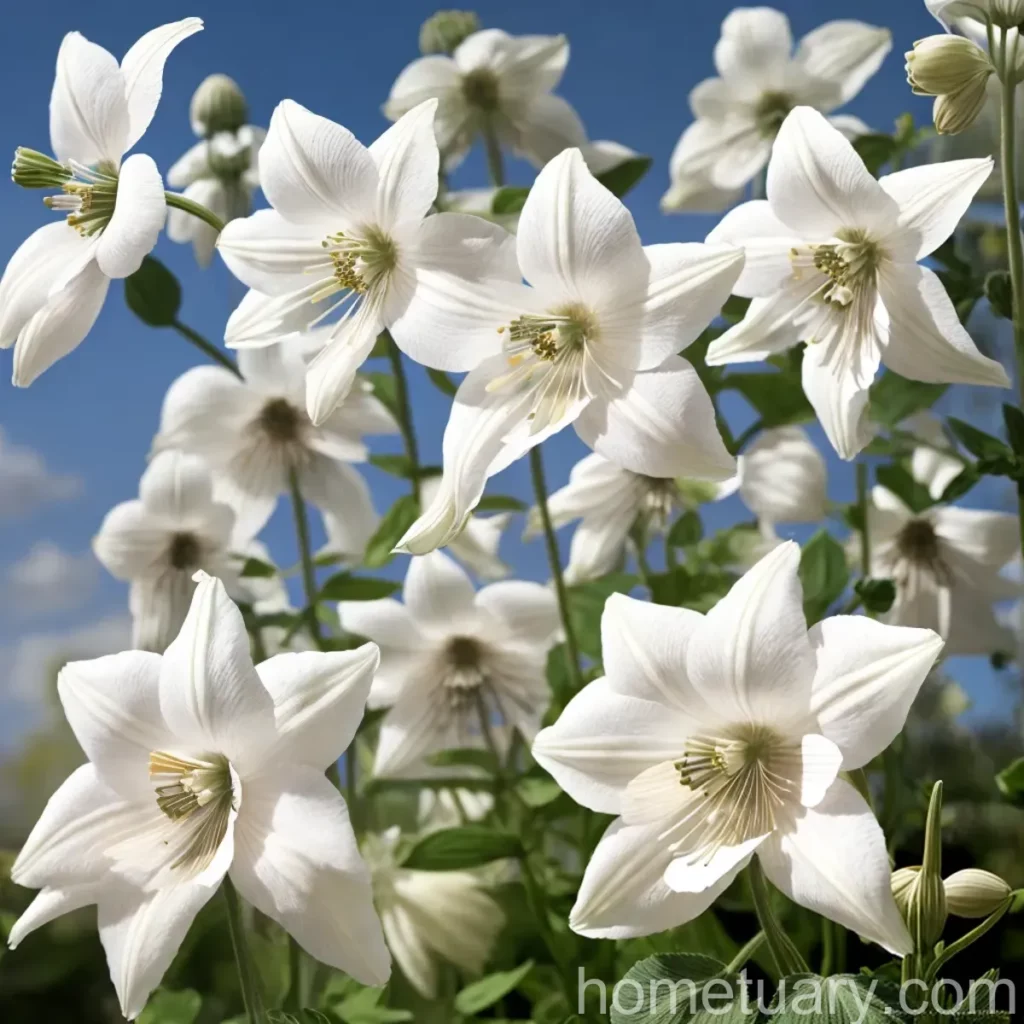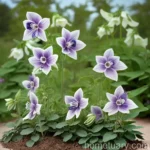Plant Profile: Columbine (Aquilegia vulgaris var. flore-pleno ‘Tower White’)
Columbine (Aquilegia vulgaris var. flore-pleno ‘Tower White’) is a stunning perennial plant known for its double flowering blooms and elegant appearance. This unique variety of columbine has captured the hearts of many gardeners due to its exceptional beauty and ease of cultivation. In this comprehensive guide, we will delve into the culture, uses, care, and maintenance of columbine, with a specific focus on the ‘Tower White’ variety.
What is Columbine (Aquilegia vulgaris var. flore-pleno ‘Tower White’)?
Columbine, scientifically known as Aquilegia vulgaris var. flore-pleno ‘Tower White’, is a herbaceous perennial plant belonging to the Ranunculaceae family. It is characterized by its unique, double-flowered blooms that resemble delicate, dangling bells. The ‘Tower White’ variety, in particular, is renowned for its pristine white flowers that add a touch of elegance to any garden landscape.
This plant typically reaches a height of 24 to 36 inches and displays a clumping growth habit. The distinct foliage of columbine consists of attractive, lobed leaves that enhance its ornamental appeal even when the plant is not in bloom. Columbine is a relatively low-maintenance plant and is a popular choice for garden borders, woodland gardens, and naturalized settings.
Key Takeaways
- Plant Name: Columbine (Aquilegia vulgaris var. flore-pleno ‘Tower White’)
- Botanical Classification: Aquilegia vulgaris
- Variety: Flore-pleno ‘Tower White’
- Common Names: Tower White Columbine, Double-Flowering Columbine
- Lifespan: Perennial
- Flower Color: White
- Growth Habit: Clumping
- Special Feature: Double flowers
Culture
Columbine is renowned for its exquisite flowers and relatively low maintenance requirements. Understanding its culture and growing conditions is essential to ensure the plant thrives and produces an abundance of delicate blooms.
Uses
Columbine serves both ornamental and ecological purposes in garden settings. Its uses include:
- Garden borders
- Woodland gardens
- Naturalized areas
- Pollinator gardens
- Cut flower gardens
Water
Columbine plants prefer consistently moist, well-draining soil. They do not tolerate waterlogged conditions, but they benefit from regular watering, especially during periods of drought. Adequate moisture is crucial for promoting healthy growth and abundant flowering.
Sunlight
Columbine thrives in partial to full sunlight. While it appreciates exposure to sunlight, especially in cooler climates, it benefits from some afternoon shade in regions with intense heat. Finding the right balance of sunlight is essential for optimal growth and flowering.
Fertilizer
When it comes to feeding columbine, a balanced, organic fertilizer applied in early spring and midsummer can support healthy growth and vibrant blooms. However, it’s important to avoid excessive fertilization, as columbine plants are relatively light feeders and can be sensitive to high levels of nutrients.
Soil
Columbine prefers moist, fertile soil with good drainage capabilities. A well-amended loamy soil that retains moisture without becoming waterlogged is ideal for cultivating healthy columbine plants. Amending the soil with organic matter during planting can enhance its fertility and structure.
Pruning
Pruning columbine involves deadheading spent flowers to encourage continuous blooming and prevent the plant from self-seeding excessively. In addition, removing any yellowing or damaged foliage can help maintain the plant’s vigor and aesthetic appeal.
Propagation
Columbine can be propagated through various methods such as seed sowing, division, and root cuttings. Each propagation technique offers its own set of advantages and is suitable for different situations and preferences.
Seed Sowing
- Start seeds indoors in late winter or early spring.
- Sow seeds on the soil surface and lightly press them into the soil.
- Keep the soil consistently moist until germination occurs.
- Transplant seedlings outdoors after the last frost date.
Division
- Divide mature columbine plants every 3 to 4 years in early spring or fall.
- Carefully lift the plant and separate the rhizomes or root ball into sections.
- Replant the divisions in well-prepared soil and water thoroughly.
Root Cuttings
- Take 2 to 3-inch long root cuttings from healthy columbine plants in late winter.
- Plant the cuttings horizontally in containers filled with a well-draining potting mix.
- Keep the cuttings evenly moist and provide warmth to encourage root development.
Container Popularity
Columbine, including the ‘Tower White’ variety, is well-suited for cultivation in containers. The graceful blooms and attractive foliage make it a popular choice for adding ornamental appeal to patios, balconies, and outdoor living spaces.
Common Diseases
As with many ornamental plants, columbine is susceptible to certain diseases that can affect its overall health and vigor. It’s important to be vigilant and proactive in disease management to ensure the plant’s longevity and optimal performance.
Disease Diagnosis
Common diseases that affect columbine include:
- Powdery Mildew: Identified by the presence of white powdery patches on the leaves.
- Leaf Spot: Characterized by brown or black spots on the foliage, often with yellow halos.
- Downy Mildew: Notable for the appearance of yellow or pale green patches on the foliage.
Common Pests
Columbine may also fall prey to various pests that can compromise its growth and flowering. Being aware of common pests and implementing appropriate control measures can safeguard the plant from infestations.
Botanist’s Tips
Columbine enthusiasts and botanists alike offer valuable insights and tips for cultivating and caring for this beloved plant. These tips can enhance your understanding of columbine and empower you to cultivate healthy, thriving specimens in your garden.
Fun Facts
Despite their elegance and beauty, columbine plants harbor a range of interesting and intriguing characteristics that contribute to their allure. Learning about these fun facts can deepen your appreciation for these enchanting flowering perennials.
Links to External Resources
For further information on columbine cultivation and care, explore the following resources:
- The American Columbine
- Royal Horticultural Society – Aquilegia
- Columbine Plant Care and Maintenance
- Perennials for Every Purpose
In conclusion, columbine (Aquilegia vulgaris var. flore-pleno ‘Tower White’) is a captivating plant that adds timeless elegance and grace to garden landscapes. By understanding its culture, propagation, and maintenance requirements, you can cultivate thriving columbine specimens and enjoy the beauty of their exquisite double-flowering blooms year after year. Whether planted in garden borders, containers, or naturalized settings, the ‘Tower White’ variety is sure to command attention and inspire awe with its enchanting presence.















